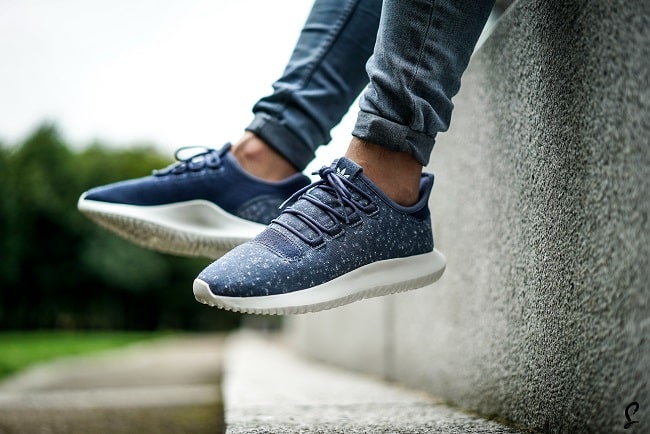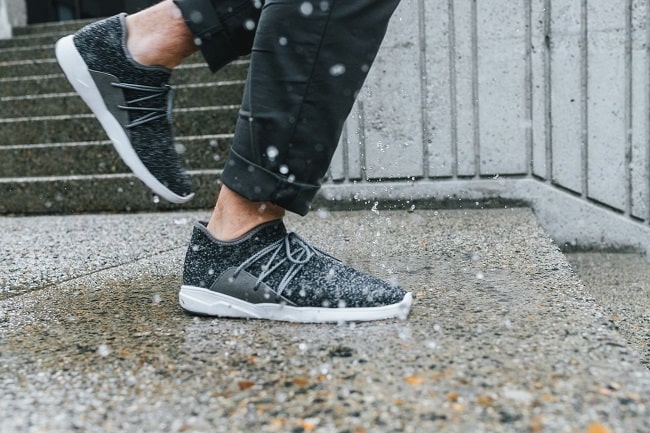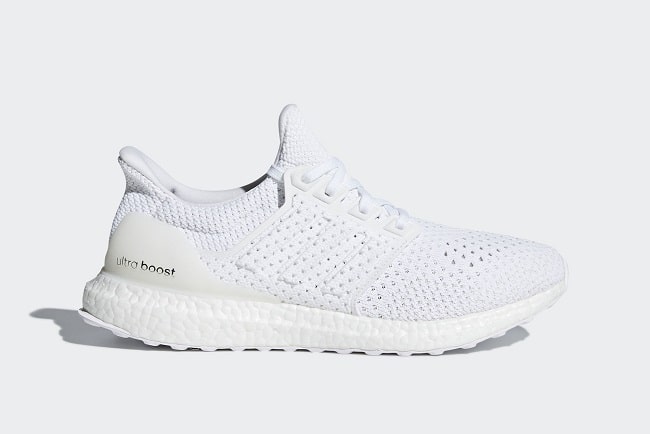1
HOME > Trends >
EVERYTHING YOU SHOULD KNOW ABOUT TECH FOOTWEAR
DO YOU KNOW YOUR ULTRALIGHT UPPERS TO YOU MIDSOLE CUSHIONING?
Written by Ivan Yaskey in Trends on the 25th September 2018

In recent years, the motto behind many footwear brands seems to be: Make it as light as possible, without reducing performance. The result means we’ve got sock-like running shoes, hiking boots utilising nylon instead of leather, and men’s dress shoes with textured EVA outsoles. In short, tech features are everywhere, even when we don’t even realise it. As a secondary response, we’re also seeing a wave of futuristic-seeming shoes that, while visually interesting, are pure novelty products. Under Armour’s ArchiTech, for instance, opts for a 3D-printed lattice-like outsole, and is one of the first of its type to hit the mass retail market. ShiftWear, meanwhile, lets the user connect a smartphone to his shoes to customise the design via a series of panels. But, beyond these innovations, most consumers wonder what’s being cut out when they go lighter, and what’s replacing or upgrading that familiar sense of security. Here, we’ve put together a rundown of familiar concepts, and what they do.
Ultralight Uppers
By now, a running shoe with an all-mesh or mesh and textile upper isn’t a novelty – it has become the standard. In fact, the all-around breathable sensation created has spread to both hiking and work boots; as such, even for something heavy duty, mesh or woven nylon panels in key areas turn into a necessity. Otherwise, that lack of ventilation causes your feet to overheat and get fatigued – a liability when you’re on the trails or worksite. Yet, mesh alone isn’t enough. Nike’s been pushing the boundaries with its Flyknit, a single-piece polyester upper that simultaneously reduces material waste and seams. The result uses less fabric, cuts down on potential chafing, and is comfortable enough to be worn without socks.

Midsole Cushioning
EVA is now the default midsole material, no matter if you’re hitting the gym or dressing up. The foam, typically compression molded, performs a series of duties: shock absorption, impact reduction, and cushioning, all to lessen fatigue and keep you comfortable without seeming heavy and bulky. Yet, especially for athletic footwear, EVA’s list of properties has become mundane and, frankly, unexceptional. As a step up, Adidas created its Boost, designed with a proprietary midsole that not only takes in the energy from your impact but further repurposes it once your foot hits the ground. The result helps with evening out your strides, makes your foot feel lighter, and gives you that go-forward sensation. The Nike Zoom Vaporfly 4% involves a similar blend of technologies. ZoomX foam and an internal carbon fiber plate help increase your speed and, by lightening up the overall design, eliminate more potential distractions. Not just relying on foam, Under Armour devised an 'Energy Web' for its UA HOVR. Although the cushioning’s still there, thanks to an innovative olefin-wax based foam, the mesh is said to improve both responsiveness and energy return, offering greater shock absorption and a more cloud-like sensation.

Waterproofing
Certain situations call for waterproof footwear, or at least some degree of water resistance: Shoveling or walking through snow, regularly working in a wet or damp environment, and hiking or trail running through variable terrain. To anticipate these situations, footwear typically has a waterproof or GORE-TEX membrane and an exterior waterproof treatment. The combination repels moisture from the outside and prevents it from seeping through. Unfortunately, especially with fully waterproof footwear, your feet start to sweat, even as you stay dry. To combat this, Vessi Footwear came up with a new approach, using its own hydrophobic Flash-Knit Technology. The single-piece, seamless design eliminates that plastic wrap-feeling liner, shedding moisture from the surface and having no spots where it could seep through. Secondarily, the technology results in a lightweight, breathable shoe.

Changing Outsoles
No traction? You’ll be slipping all over the place. For this reason, footwear from lace-up Oxfords to work boots has some kind of pattern that keeps you stable. Slip-resistant and oil-resistant outsoles give this an extra dimension, while mud-shedding lugs and cleats ensure you don’t track debris all over your car and house. Yet, beyond these essentials, outsoles are literally changing shape. Consider Adidas’ Feet You Wear, recently revived with the Crazy Boost You Wear basketball shoe. Initially, Feet You Wear rounded out basketball shoes’ harder edges, going along with the wearer’s motion and smoothing out his performance. The revival, designed more for streetwear than true court use, divides the sole into three separate pods. The change continues the original’s idea, allowing the outsole to completely line up with the wearer’s strides. Nike’s Lunarlon has toyed around with a similar variable-density, multi-part concept. The sole unit starts with a softer foam core, which causes impact to spread out over a greater area, and balances that out with a firmer material, which helps the foam bounce back into place. With more recent shoes, such as the LunarEpic Flyknit 2, the outsole seems thick at a glance, but in response to the degree of stress your foot could experience, its construction adjusts the density and support received. For future shoes, however, Lunarlon will be replaced with React technology – essentially the same concept but with an even cushier sensation.

Self-Lacing
No, it’s not uniform and still gets referred to as 'Back to the Future' technology, but self-lacing shoes became a reality in 2018. According to reports, Nike’s CEO announced the HyperAdapt 1.0, a Tinker Hatfield-created trainer with this feature, in 2015 and officially unveiled it in 2016. Consumers could start purchasing the shoe in 2018. How does the feature work? A sensor’s part of its design, and once the heel hits it, the shoe’s laces automatically tighten. Yet, because the fit won’t be precise, two side buttons let the user tighten or loosen the laces to his or her needs. Beyond the novelty value, this technology, also called 'adaptive lacing,' may eventually benefit serious athletes. Specifically, the sensor delivers real-time, body-specific adjustments, reducing loose laces during training and races and eliminating the time needed to correct this issue manually.


Trending
2
3
4
5
6
7
8
9
10










